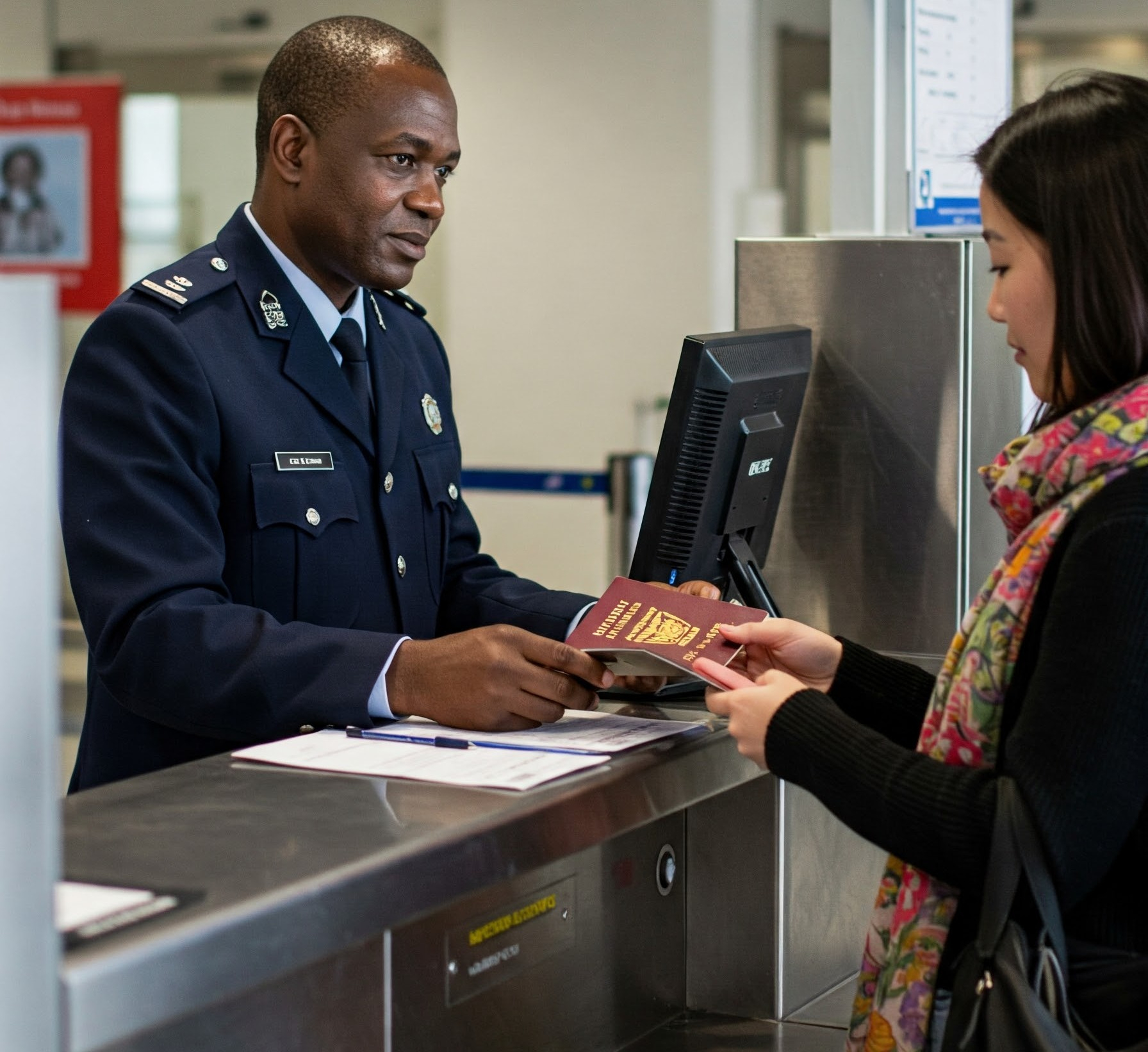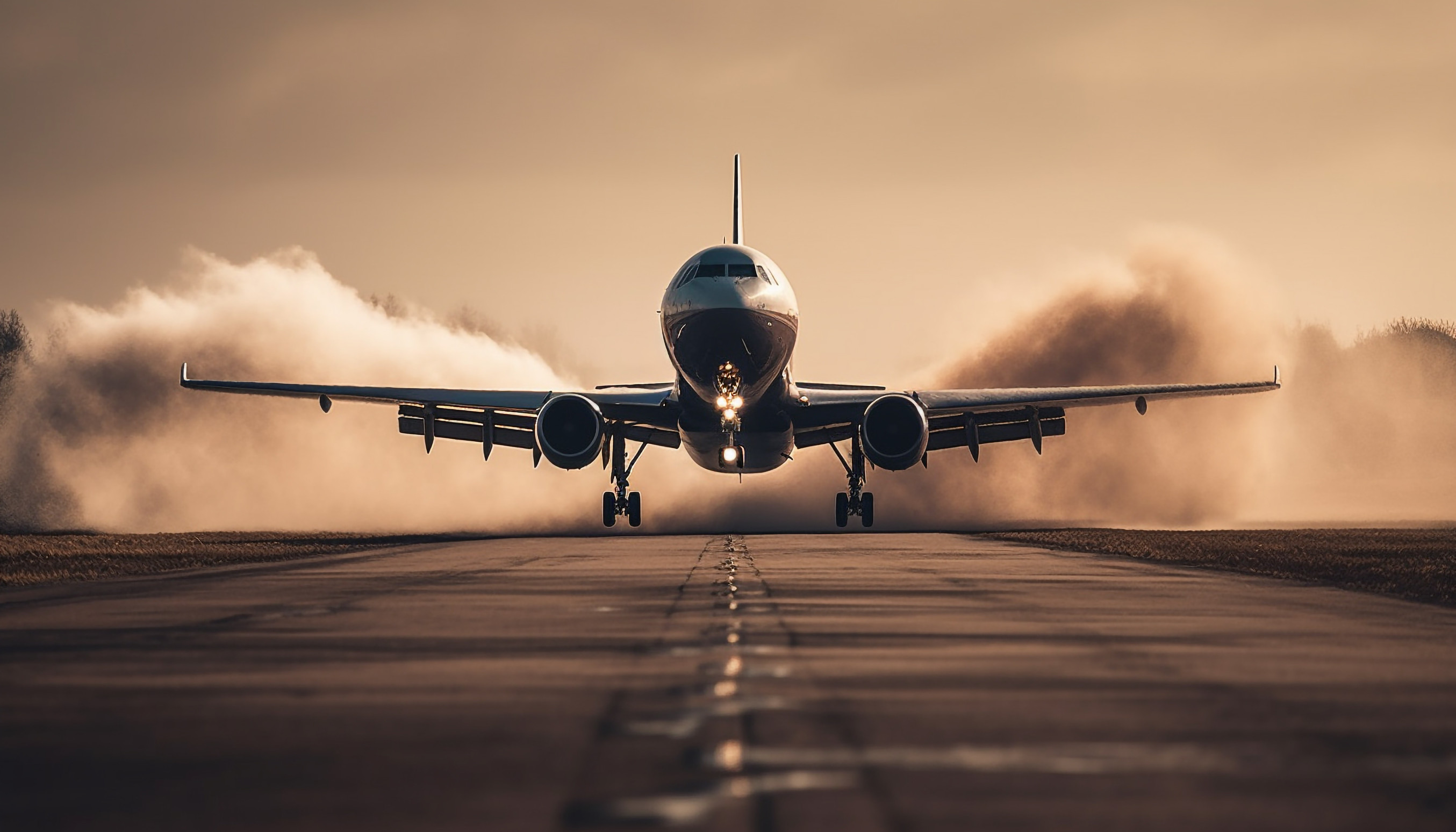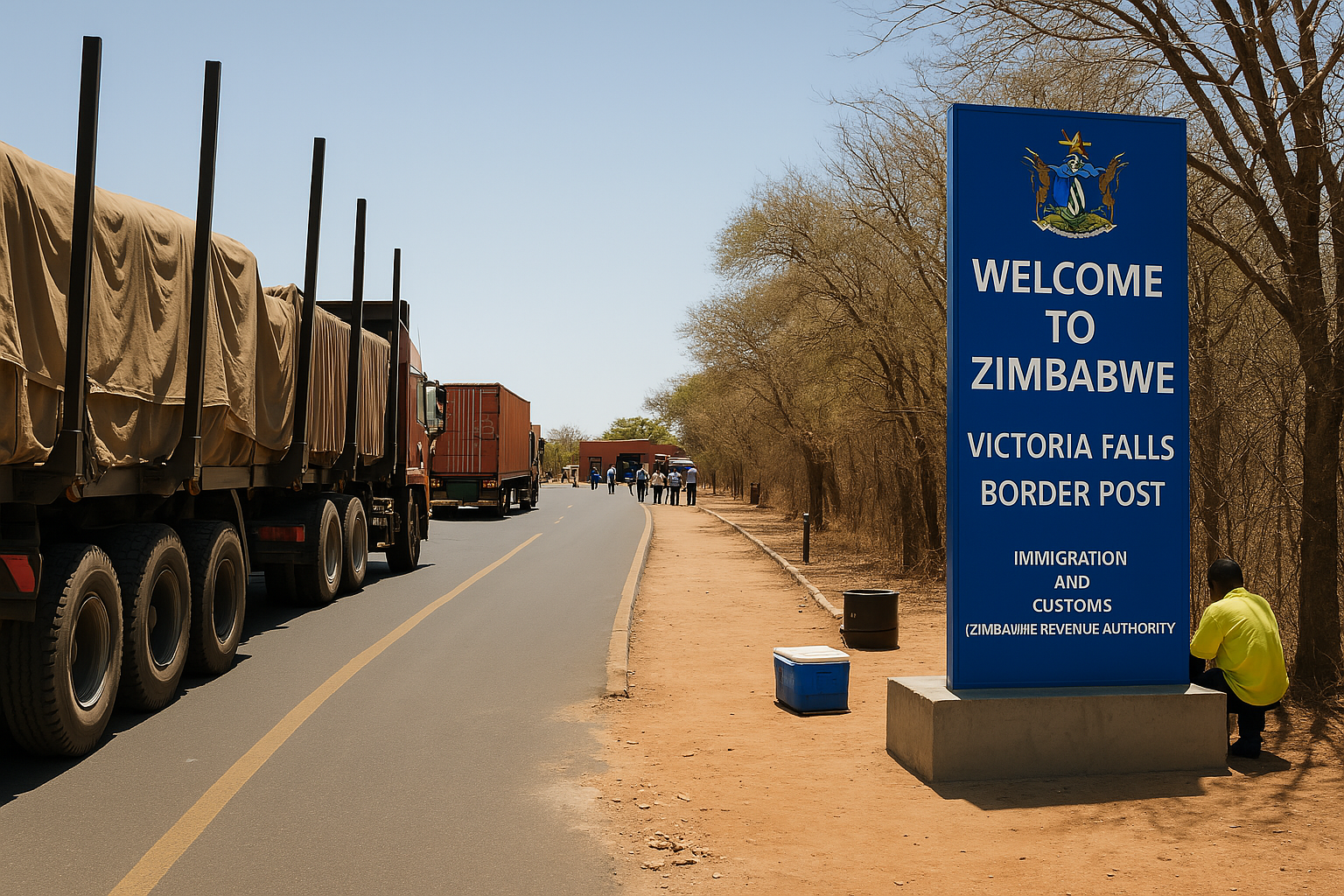Zimbabwe, with its captivating natural beauty and historical landmarks, attracts travellers from all over the world. The country boasts multiple border entry points that cater to visitors arriving by road, air, or even water. To ensure a seamless experience when entering, it is important to familiarise yourself with the immigration rules that apply at each entry point. In this guide, we will walk you through the different entry points to Zimbabwe and outline the key immigration regulations and visa procedures you need to know.
It is essential to understand the visa requirements based on your nationality and travel purpose. The country offers various visa options, including single and double-entry visas, as well as visa-on-arrival for eligible travelers. Those intending to stay longer can apply for business or student visas. Since immigration policies and travel advisories can change frequently, it is advisable to check the latest updates from Zimbabwe’s immigration services before traveling.
To ensure a smooth entry, it's often best to apply for your Zimbabwean eVisa in advance to prevent any delays upon arrival.

Major Border Entry Points to Zimbabwe
Zimbabwe has a number of border entrance locations, each with its own set of regulations and processes. You can enter the nation more easily if you are aware of these things. The major border entry points in Zimbabwe are:
Airports

-
Buffalo Range International Airport
Serving the southeastern Lowveld region, Buffalo Range International Airport offers a more secluded entry point for those venturing into Zimbabwe's wildlife conservancies. This airport caters primarily to regional and charter flights, providing direct access to areas like the Save Valley Conservancy and the Great Limpopo Transfrontier Park. Travellers choosing this route can expect a less crowded experience, though with more limited facilities compared to major international hubs.
-
Charles Print Airport
Unlike the others, Charles Prince Airport near Harare is not designed as a primary entry point for international tourists. Its function is mainly domestic, serving private aviation, flight training, and smaller charter services. Therefore, it's not a typical arrival point for those entering Zimbabwe for tourism or extensive travel.
-
Joshua Mqabuka Nkomo International Airport
Situated in Bulawayo, Joshua Mqabuka Nkomo International Airport acts as a vital gateway to Zimbabwe's western region. It provides a valuable alternative to Harare's airport by offering direct access to travellers exploring Bulawayo and its surrounding areas. This airport handles both regional and some international flights, facilitating travel for both business and leisure.
-
Kariba Airport
Kariba Airport is a key entry point for tourists drawn to the scenic Lake Kariba. Its primary role is to serve the region's tourism industry, providing convenient access to lodges, houseboats, and wildlife experiences. While primarily handling domestic flights, it plays a crucial role in bringing visitors to this popular destination.
-
Masvingo Airport
Masvingo Airport primarily functions as a domestic airport, serving travellers visiting the historical Great Zimbabwe Monuments and the Masvingo Region. It provides regional connectivity, facilitating domestic travel within Zimbabwe. Therefore, it is not a large international entry point.
-
Robert Gabriel Mugabe International Airport
As Zimbabwe's largest and busiest airport, Robert Gabriel Mugabe International Airport in Harare serves as the country's primary international gateway. It handles a substantial volume of international and domestic traffic and acts as a hub for onward travel within Zimbabwe. For most international travellers, this airport is their initial point of entry.
-
Victoria Falls International Airport
Victoria Falls International Airport is a critical entry point for tourists visiting the iconic Victoria Falls. Its focus is firmly on servicing tourist-based air traffic. With upgraded facilities, it accommodates a significant number of international arrivals, providing direct access to one of Africa's most popular natural wonders.
Road Border Posts

-
Beitbridge Border Post
For travellers entering Zimbabwe from South Africa, Beitbridge is the primary land crossing, though it is often congested. Expect significant traffic, especially during peak travel times and holidays. Be prepared for potential delays and ensure you have all necessary travel documents. This is a pivotal juncture, so strategies appropriately. It is wise to have plenty of water and snacks, especially during the hotter months. Be aware that commercial traffic prioritisation can lengthen waiting times for private vehicles.
-
Binga Border Post
Travellers exploring Lake Kariba and seeking to cross into Zambia via the lake will encounter the Binga Border Post. This smaller crossing primarily serves local traffic and those engaged in lake-based travel. Expect less congestion but also more limited facilities. Travellers should confirm the operating hours of the water crossing, as they can be subject to change. Limited facilities are available, so bring what you need.
-
Cashel Border Post
For those venturing into the remote eastern regions of Zimbabwe and Mozambique, the Cashel Border Post provides a less frequented crossing. This small border post mainly serves local traffic, so travellers should expect a more rustic experience. Road conditions leading to this border can be challenging, so a sturdy vehicle is recommended. Ensure you have adequate fuel, as refuelling options may be scarce.
-
Chirundu Border Post
Travellers moving between Zimbabwe and Zambia along the Harare-Lusaka Highway will use the Chirundu Border Post. This is a significant crossing for regional travel, so be prepared for moderate to heavy traffic, especially for commercial vehicles. The crossing is located along the Zambezi River, so expect hot conditions. Have your vehicle documentation ready for inspection to accelerate the process.
-
Forbes Border Post
If you are travelling between Mutare, Zimbabwe, and Mozambique, the Forbes Border Post serves as your point of entry. It's a key crossing for regional travel, so anticipate moderate traffic and ensure you have all required documentation. This border crossing is important for the transport of goods, so be aware of heavy truck traffic. The surrounding terrain is mountainous, so be prepared for winding roads.
-
Kanyemba Border Post
For adventurers seeking remote crossings, the Kanyemba Border Post offers a unique entry point where the Zambezi and Luangwa rivers meet. This smaller crossing serves those exploring the far northern regions of Zimbabwe and Zambia, so expect limited facilities and a more rugged experience. This area is known for its wildlife, so be cautious and aware of your surroundings. Plan for self-sufficiency, as services are limited.
-
Kariba Border Post
Travellers exploring Lake Kariba and crossing between Zimbabwe and Zambia via water will use the Kariba Border Post. This unique, water-based crossing primarily caters to tourists and local traffic. Confirm boat schedules and border operating hours in advance, as they can fluctuate. Have all boat and passenger documentation prepared.
-
Kazungula Border Post
The modern Kazungula Border Post, via the Kazungula Bridge, is a vital crossing for those travelling between Zimbabwe, Zambia, Botswana, and Namibia. It streamlines regional travel, so expect well-maintained facilities and efficient processing. The bridge itself is a modern engineering marvel, which helps to reduce travel times in the region. The modern facilities allow for faster processing of both vehicle and pedestrian traffic.
-
Maitengwe Border Post
For travellers moving between Zimbabwe and Botswana, Maitengwe Border Post offers a land crossing with moderate traffic. Prepare for standard border procedures and ensure you have all necessary documents. Road conditions on both sides of the border are generally good, but always check for updates. Be aware of varying border crossing times.
-
Mount Selinda Border Post
Those travelling to or from the eastern highlands of Zimbabwe and Mozambique will use the Mount Selinda Border Post. This is a small regional crossing, so expect less traffic. The eastern highlands are known for their scenic beauty and cooler temperatures. This border post serves local communities.
-
Mpoengs Border Post
This land crossing between Zimbabwe and Botswana handles regional traffic. Travellers should expect normal border crossing procedures, with a focus on documentation checks and vehicle inspections. This is a smaller border post, so expect less traffic compared to major crossings, which can mean quicker processing. Road conditions on both sides of the border are usually good, facilitating relatively smooth travel, but it's always wise to confirm current road conditions before your journey, as they can change. Be aware that services near this border post may be limited, so ensure you have sufficient supplies.
-
Mukumbura Border Post
Mukumbura Border Post is a regional land border crossing between Zimbabwe and Mozambique, primarily serving local traffic and smaller commercial vehicles. Road conditions can vary significantly, especially during the rainy season, so it is crucial to check before you travel and ensure you have a suitable vehicle. This crossing is in a more rural area, so travellers should expect limited facilities, and they should be prepared for a more basic crossing experience. It is critical to have all documentation correct, as this border post can have less tolerance for errors.
-
Mulambaphele Border Post
The Mulambaphele Border Post is a regional land border crossing between Zimbabwe and Botswana, catering to local travel and smaller-scale trade. This is a smaller crossing, so expect less congestion compared to major border posts, which can result in faster processing times. Be aware of the varying border crossing hours, as they may be subject to change, especially during holidays or off-peak seasons. Ensure you have adequate fuel before approaching this crossing, as refuelling options in the immediate vicinity may be limited.
-
Nyamapanda Border Post
For travellers moving between Zimbabwe and Mozambique in the northeastern region, the Nyamapanda Border Post is a key crossing. Expect moderate to heavy traffic, especially for commercial vehicles. The roads in this region can be narrow and winding, so drive carefully. This is an important trade route.
-
Plumtree Border Post
Travellers crossing between Zimbabwe and Botswana will often use the Plumtree Border Post. This border post is a well-used crossing, so expect moderate to heavy traffic. This crossing is important for both commercial and tourist traffic. Plan for possible delays during peak travel times.
-
Sango Border Post
The Sango Border Post is a regional land crossing between Zimbabwe and Mozambique, primarily used by local communities. Road conditions vary, so checking beforehand is crucial, especially during the rainy season. This crossing can be used for travel between Gonarezhou and Kruger National Parks, but plan for limited hours and facilities. Ensure you have proper vehicle documentation.
-
Victoria Border Post
For tourists visiting Victoria Falls and crossing between Zimbabwe and Zambia, the Victoria Border Post on the Victoria Falls Bridge is a very busy point of entry. Expect significant tourist traffic and ensure you have all necessary travel documents. The bridge itself is a tourist attraction, so allow time to appreciate the views. Have your passports ready for inspection to accelerate the process.
-
Pandamatenga, Zimbabwe
Those travelling between Zimbabwe and Botswana near Hwange National Park will use the border area in Pandamatenga. It is used by both commercial and tourist traffic. This border area is near wildlife areas, so be aware of animals crossing the road. Be sure to have all necessary documentation for both vehicle and personal travel.
Immigration Rules for Entering Zimbabwe
Understanding the general immigration rules is key to ensuring that you do not face any unnecessary delays or complications when entering Zimbabwe.
General Immigration Guidelines
To enter Zimbabwe, all tourists must present valid travel documents and meet certain entry requirements. Visitors from many countries need a visa, while others may be eligible for visa exemptions.
Passport and Visa Requirements
All travellers must have a valid passport with at least six months of validity from their planned date of entry into Zimbabwe. Depending on your nationality, you may require a visa.
Most travellers can apply for a Zimbabwe e-visa online by filling out the Zimbabwe e-Visa Application Form, which simplifies the process. However, some visitors may need to apply for a traditional visa from a Zimbabwean embassy or consulate in their home country.
Customs and Declarations
Zimbabwe enforces strict customs regulations to control the flow of goods across its borders. It’s essential to understand what you can and cannot bring into the country.
- Restricted and Prohibited Items
Certain goods, such as illegal drugs, firearms, and endangered wildlife products, are strictly prohibited. Make sure you’re familiar with these items before you cross the border.
- Duty-Free Allowances
Travellers are allowed to bring in certain items duty-free, including alcohol, tobacco, and perfumes, within specified limits. However, exceeding these limits may result in fines or confiscation of goods.
- Currency Declaration
If you are carrying more than US$5,000 in cash, you’ll need to declare it to customs. Failure to do so can result in penalties.
Special Immigration Considerations
There are a few special immigration rules for travellers with dual citizenship, minors, and those seeking to extend their stay. Understanding these can help ensure a hassle-free entry and stay in Zimbabwe.
Travelers with Dual Citizenship
If you hold dual citizenship, be sure to clarify which passport you’ll use for entry, as rules can vary depending on the passport presented at immigration.
Minors and Their Immigration Rules
Minors travelling to Zimbabwe must have proper documentation, including written consent from both parents or legal guardians if travelling with one parent or alone. Please refer to the Zimbabwe eVisa for Minor for information on documents required, eligibility criteria, etc.
Extension of Stay and Visa Renewals
If you need to extend your stay, apply at the Zimbabwean Immigration Office before your visa expires, as the process can take time.
Visa Information for Zimbabwe
Zimbabwe offers various e-visa options for different types of travellers. Whether you are visiting for transit, holiday, conference, or business purposes, there is a visa category that suits your needs.
eVisa System
Zimbabwe's eVisa system offers a convenient and efficient way for travellers to apply for their visas online, streamlining the process and reducing the need for in-person visits to embassies or consulates.
Zimbabwe eVisa Application Process
You can apply for an eVisa online using the following steps:

Step 1: Complete the Application Form
Begin by filling out a simple online application form with your personal details, travel information, and purpose of visit. You will need to upload essential documents such as your passport bio-page, passport-sized photograph, invitation letter, proof of residence, etc. Ensure all information is accurate for a smooth process.
Step 2: Submit & Pay the Visa Fee
Once your form is completed and all documents are uploaded, submit the application form. Use a secure online gateway to complete the payment after submitting. Payment options include credit cards and other methods, with fees varying based on the type of visa you're applying for. To get fee-related information, refer to the Zimbabwe eVisa Fee Page.
Step 3: Get Your Zimbabwe eVisa
After payment, your eVisa will be processed. Once approved, you will receive it by email, ready for download and print. Be sure to check the details on your eVisa for accuracy. Present the eVisa upon arrival to enjoy a seamless entry into Zimbabwe.
Eligible Countries
The eVisa system is available to citizens of over 100 countries, making it accessible to a broad range of international visitors.
Visa on Arrival
Zimbabwe has a visa-on-arrival service for certain nations, enabling you to apply for a visa as soon as you cross the border. Major international airports and border checkpoints usually provide this kind of service, but it's a good idea to make sure you qualify before you go.
Do Check out
Types of Zimbabwean eVisas Available
Zimbabwe offers three types of eVisas:
- Holiday eVisa: The Holiday eVisa is designed for travellers visiting Zimbabwe for leisure, sightseeing, or relaxation. The Zimbabwean eVisa platform makes it easy to get this 30-day visa. It is ideal for those looking to explore Zimbabwe’s iconic landmarks, such as Victoria Falls or Hwange National Park.
- Business eVisa: The Business eVisa is for business travellers to Zimbabwe for meetings, conferences, or partnerships. It allows up to 30 days, depending on the company. Business visitors visiting Zimbabwe may use this eVisa easily.
- Transit eVisa: The Transit eVisa is for travellers passing through Zimbabwe on their way to another destination. This visa allows for short stays, usually up to 7 days, while you wait for a connecting flight or onward travel. It is perfect for those who need to transit through Zimbabwe’s airports or road borders.
- Conference eVisa: The Conference eVisa is designed for individuals attending or participating in conferences, seminars, or workshops held in Zimbabwe. It allows attendees to stay for the duration of the event, typically up to 30 days. This eVisa simplifies the process for professionals attending industry events in Zimbabwe.
Tips for Smooth Border Crossing
Zimbabwe's border crossings aren't difficult. Tips for a smooth border crossing:
- Prepare documents beforehand: Prepare your passport, visa, and other documents before arriving at the immigration counter.
- Be Patient and Follow Instructions: Expect delays at congested border checkpoints. Patience and following instructions save time.
- Clear Communication: Learning a few English or local words might help you communicate with border authorities.
Related Links
5 Tips for a Smooth Zimbabwe eVisa Application
Top 5 Tourist Attractions in Zimbabwe
Conclusion
In conclusion, entering Zimbabwe as a tourist involves careful preparation and adherence to various regulations. Key considerations include verifying visa requirements based on nationality, ensuring passport validity and sufficient blank pages, understanding health regulations (especially regarding yellow fever), and being aware of customs rules concerning currency and goods. The duration of the permitted stay is linked to the type of visa obtained. Prospective travellers are strongly advised to consult the Zimbabwe e-Visa website for the most up-to-date and detailed information to ensure a smooth and compliant entry into this captivating country.
1
Steps to Secure Your eVisa for Zimbabwe
- Step1: Fill out the online application by providing your passport details.
- Step2: Make the payment online using a credit / debit card.
- Step3: Check your email for the payment confirmation and the electronic delivery of your visa.

I’m travelling with Gadventures in Oct.im Canadian. Can I get a visa at the border?